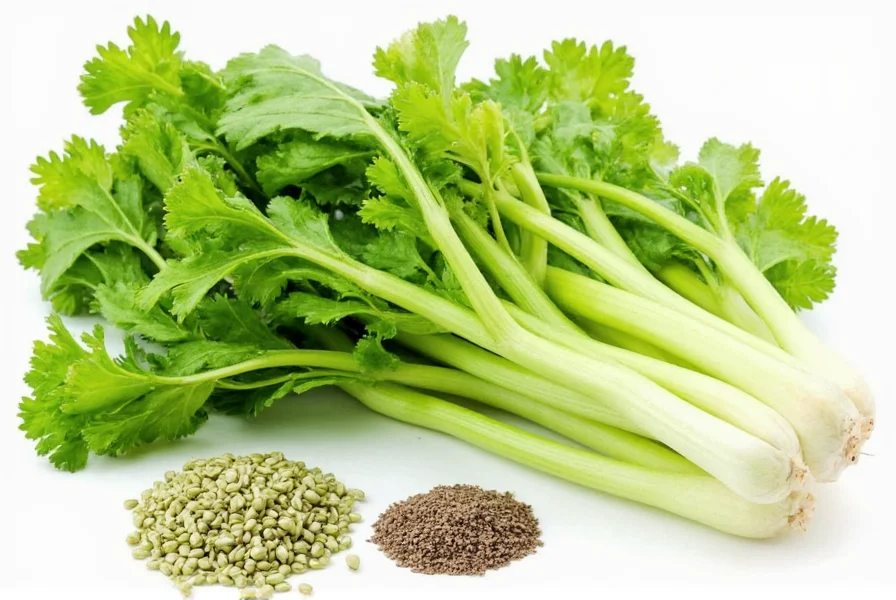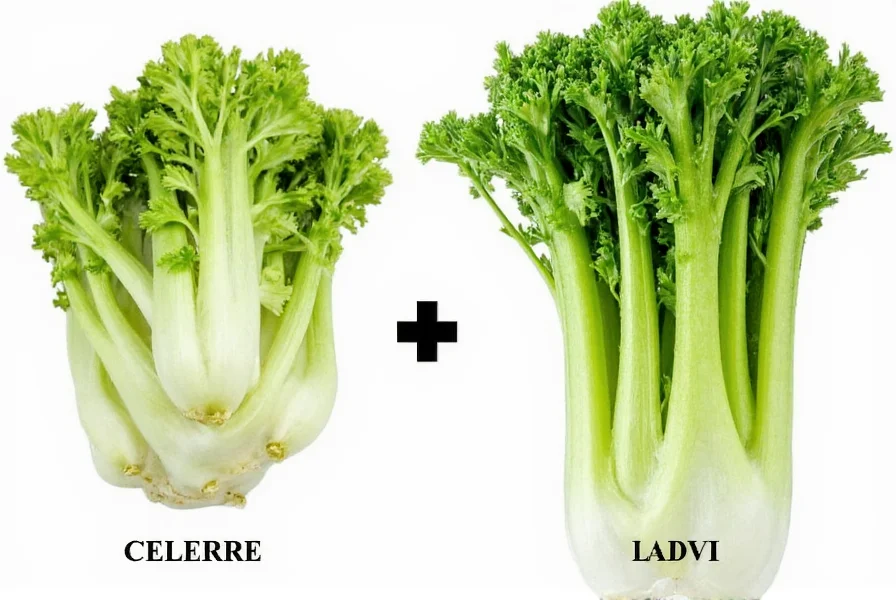When you're in the middle of cooking and realize you're out of celery seed, knowing reliable substitutions can save your recipe. This comprehensive guide provides practical alternatives that maintain flavor integrity while accommodating what's likely in your pantry right now.
Understanding Celery Seed's Unique Flavor Profile
Celery seed has a concentrated, earthy flavor with subtle bitter notes and a distinctive aroma that's more intense than fresh celery. Its essential oils contain limonene and selinene, which give it that characteristic celery taste with hints of parsley and citrus. When seeking a substitution for celery seed, you're primarily trying to replicate this concentrated celery essence without overwhelming your dish.
The challenge with finding an adequate celery seed replacement lies in balancing three elements: the celery flavor itself, the slight bitterness, and the aromatic quality. Most substitutes will cover one or two of these aspects but rarely all three perfectly. This is why understanding your specific recipe's requirements is crucial when selecting a substitute.
Top 5 Practical Substitutions for Celery Seed
1. Fresh Celery (Leaves and Stems)
Fresh celery provides the most authentic flavor replacement, though it lacks the concentrated intensity of seeds. Use the inner leaves and tender upper stalks for best results, as they contain more of the essential oils found in the seeds.

2. Celery Salt
Celery salt combines ground celery seed with salt, making it a convenient pantry staple. When using celery salt as a celery seed replacement, remember to reduce additional salt in your recipe by approximately 1/4 teaspoon for every 1/2 teaspoon of celery salt used. This substitution works particularly well in dressings, soups, and meat rubs where the salt content won't disrupt the recipe balance.
3. Lovage
Lovage offers the closest flavor match to celery seed with its intense celery-parsley profile. If you have access to this herb (either fresh or dried), it makes an excellent 1:1 replacement. Fresh lovage leaves can be used at a ratio of 1 tablespoon per 1/2 teaspoon celery seed. The main limitation is availability, as lovage isn't commonly stocked in most grocery stores.
4. Dill Seed
While not identical, dill seed shares enough flavor compounds with celery seed to serve as a functional substitute, particularly in pickling recipes and salad dressings. Use 3/4 teaspoon dill seed for every 1/2 teaspoon celery seed required. The flavor profile leans more toward dill pickle than pure celery, so this works best in recipes where complementary flavors can bridge the gap.
5. Celery Powder
Celery powder provides concentrated celery flavor at a 1:1 substitution ratio. While it delivers the essential celery taste, it lacks the distinctive aromatic quality of whole celery seeds. This makes it ideal for soups, stews, and meat dishes where the texture of seeds isn't critical to the final product.
Comprehensive Celery Seed Substitution Guide
| Substitute | Ratio (to 1/2 tsp celery seed) | Flavor Intensity | Best Recipe Applications |
|---|---|---|---|
| Fresh celery leaves | 2 tbsp chopped | Medium | Salads, dressings, seafood dishes |
| Celery salt | 1/4 tsp | Medium-High | Rubs, soups, potato salad |
| Lovage (dried) | 1/2 tsp | High | Stews, braises, vegetable dishes |
| Dill seed | 3/4 tsp | Medium | Pickling, dressings, tuna salad |
| Celery powder | 1/2 tsp | Medium | Soups, stews, meatloaf, casseroles |
Recipe-Specific Substitution Recommendations
For Soups and Stews
In long-cooking liquid-based dishes, celery powder or dried lovage work best as celery seed substitutes. The extended cooking time allows these substitutes to fully integrate their flavors. Add them early in the cooking process to maximize flavor development. For clear broths where visual appearance matters, celery powder is preferable to fresh celery, which can become stringy.
For Salads and Dressings
Fresh celery leaves provide the best texture and appearance in cold applications. Finely chop the leaves and add them just before serving to preserve their delicate flavor and vibrant green color. In creamy dressings, celery salt offers convenience without compromising texture, but remember to adjust other salt quantities accordingly.
For Pickling and Preserving
Dill seed makes the most appropriate celery seed replacement in pickling recipes, as both ingredients complement the vinegar-based preservation process. The flavor profiles work synergistically rather than competing. Use slightly less dill seed than the recipe calls for celery seed to prevent the dill flavor from dominating.
When Substitutions Won't Work
Some recipes rely specifically on the texture and visual presence of whole celery seeds, particularly in breads, crackers, and certain cheese spreads. In these cases, no substitution perfectly replicates both the flavor and visual element. Your best options are either to omit the celery seed entirely or make a special trip to purchase it. For baking applications where seeds provide visual interest, consider using poppy seeds as a textural substitute, though this won't replicate the flavor.
Creating Your Own Celery Seed Blend
For those who frequently need celery seed substitutions, creating a custom blend ensures you always have an alternative on hand. Combine equal parts dried parsley, dried dill weed, and a pinch of ground mustard seed. Store in an airtight container away from light. This blend works at a 3:4 ratio (3 parts blend to 4 parts celery seed called for in recipes) and maintains quality for up to six months.
Storage Tips for Substitutes
Proper storage maximizes the effectiveness of your celery seed alternatives. Keep dried substitutes in airtight containers away from heat and light. Fresh celery leaves stay viable for substitution purposes for 3-4 days when stored in a damp paper towel inside a sealed container in the refrigerator. For longer storage, freeze chopped celery leaves in ice cube trays with water or broth for future use in cooked dishes.
Frequently Asked Questions
Can I use celery salt instead of celery seed in tuna salad?
Yes, but use half the amount of celery salt compared to celery seed and reduce additional salt in your recipe. For every 1/2 teaspoon of celery seed called for, use 1/4 teaspoon celery salt and decrease other salt by 1/8 teaspoon to maintain proper seasoning balance in your tuna salad.
What's the best celery seed substitute for someone watching sodium intake?
Fresh celery leaves or celery powder are ideal low-sodium alternatives to celery seed. Use 2 tablespoons chopped fresh leaves or 1/2 teaspoon celery powder per 1/2 teaspoon celery seed required. Both options deliver the characteristic celery flavor without added sodium, making them perfect for heart-healthy cooking.
How does substituting dill seed for celery seed affect flavor in potato salad?
When substituting dill seed for celery seed in potato salad, use 3/4 teaspoon dill seed per 1/2 teaspoon celery seed. This creates a slightly more pronounced dill flavor that complements traditional potato salad ingredients. The resulting dish will have a flavor profile closer to German potato salad than American-style, with a pleasant tanginess that many find appealing.
Can I substitute fresh celery for celery seed in bread recipes?
Fresh celery isn't ideal for bread recipes that call for celery seed due to moisture content and texture differences. Instead, use celery powder at a 1:1 ratio or create a dry substitute by finely mincing celery leaves and dehydrating them in a low oven (170°F) for 2-3 hours until crisp, then grinding to a powder. This maintains the visual speckled appearance while delivering the celery flavor.
Why does my substitution for celery seed taste different even when following ratios?
Celery seed has a unique concentration of volatile oils that are difficult to replicate exactly. Differences in taste often stem from variations in ingredient freshness, growing conditions, and storage. For more consistent results, toast your substitute (like dill seed or celery powder) lightly before use to release additional flavor compounds, and add it later in the cooking process to preserve volatile aromatics.











 浙公网安备
33010002000092号
浙公网安备
33010002000092号 浙B2-20120091-4
浙B2-20120091-4